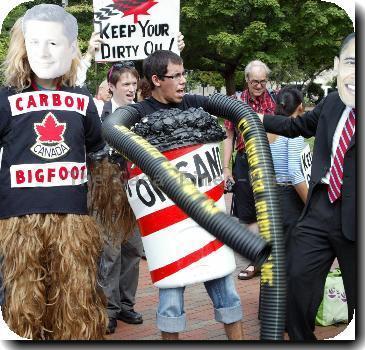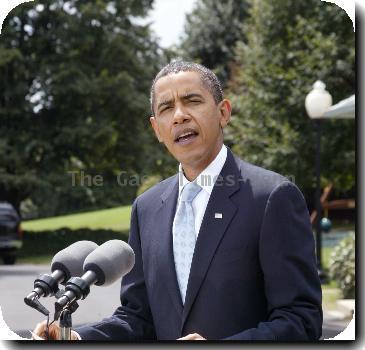Australia blocks North Korean artists from exhibition of their work, drawing censorship claim
By Rohan Sullivan, APTuesday, December 8, 2009
Australia accused of censorship over NKorean art
SYDNEY — Australia was accused of censorship Tuesday for denying visas to North Korean artists whose works are on display in a regional exhibition, but the government says the art comes from Pyongyang’s propaganda machine and its creators are not welcome.
Critics said the decision is a missed opportunity to help open one of the world’s most closed societies.
North Korea’s regime prohibits the Internet as well as outside phone networks, radio and TV, and the communist government strictly controls travel abroad. It has also drawn international ire for its pursuit of nuclear weapons.
In recent years, sporting and cultural performances — such as the New York Philharmonic’s concert last year in the capital — have provided the best opportunity for “soft diplomacy” that keeps the country engaged with the outside world, even if formal ties are strained.
Formal diplomacy also moving forward this week, as U.S. President Barack Obama’s special envoy on North Korea headed to Pyongyang to try to persuade the government to return to nuclear disarmament talks.
In Australia, five artists from the Mansudae Art Studio were invited to the Asia Pacific Triennial of Contemporary Art in Queensland state to talk about 15 pieces the organizers commissioned for the exhibition, which includes work from more than 100 artists from 25 countries.
Foreign Minister Stephen Smith rejected the artists’ applications for an exception to a visa ban on North Korea, part of targeted sanctions imposed in 2006 in response to the country’s steps to develop atomic weapons.
Organizers first spoke out about the ban as the exhibition opened on Saturday.
Smith’s department said in a statement released Tuesday that issuing visas for Mansudae studio artists would have sent the wrong message.
“The studio reportedly produces almost all of the official artworks in North Korea, including works that clearly constitute propaganda aimed at glorifying and supporting the North Korean regime,” the statement said.
Some of Mansudae’s approximately 1,000 artists devote their time completely to painting portraits of Kim Il Sung, the late founder of the Stalinist state who handed power to his son, current leader Kim Jong Il, and who is the subject of a government-fueled personality cult.
Nick Bonner, a Beijing-based British businessman and art dealer who helped curate the exhibition, said all art studios in North Korea — like most other things in the hard-line state — were government organizations, but that did not mean every work was political.
Only one of the works commissioned for the exhibition was in the socialist realism style that most people associate with communist propaganda, a large mosaic depicting a scene in a steel mill.
The mosaic was prominently positioned at the start of the North Korean display “so that audience members will be able to perceive the radical nature of the works that come later,” the Queensland state Art Gallery says in its notes on the display.
The other works, including sketches and portraits and landscapes in oil paint and ink, “are not propaganda — they are expressions of artistic commitment by individual artists who are experimenting with themes and ideas that are groundbreaking for them,” the gallery said.
Bonner said the artists were extremely disappointed at the Australia decision, after spending weeks getting North Korean authorities to approve passports so they could go to Brisbane. Art brought in for the show did not require government approval.
“To allow their work in but not them in, that’s even worse,” Bonner told The Associated Press. “For an artist to produce a body of work and not be able to speak about it, that’s censorship.”
Yang Moo-jin, a professor at the University of North Korea Studies in Seoul, said the visit to Australia by the artists could have formed part of international efforts to draw out North Korea, and Canberra should not have banned it.
“I think Australia took that step because it was concerned the exhibition may turn into a site for their political propaganda,” Yang said. “But it’s too passive an approach on North Korea.”
Others said the idea that the exhibition might represent artistic freedoms in North Korea was wrong.
“There is no ‘pure’ art in North Korea,” said Lim Soon-hee, a senior researcher at the Korea Institute for National Unification in Seoul. “In North Korea, all art and literature works are the products of the party’s art and literature policy. There is no individual inspiration in their artwork.”
As they prepared for the Australian exhibition, some of the artists told Associated Press Television News they hoped their work would improve ties between the two nations.
“This artwork shows the collective innovation, and creative passion of our Korean working class,” artist O Song Gyu said in Pyongyang. “I think that through this artwork, the Australian people will be able to get a better understanding of our Korean people.”
Australia, one of the United States’ closest allies in the Asia-Pacific, has diplomatic ties with North Korea, but they are prickly. Canberra froze relations in 2002 and imposed limited sanctions in 2006 over nuclear issues. North Korea closed its embassy in Canberra last year, citing financial reasons.
Associated Press Writer Hyung-jin Kim in Seoul, South Korea, contributed to this report.
Tags: Arts And Entertainment, Asia, Australia, Australia And Oceania, Barack Obama, Canberra, Drawing, East Asia, Government Regulations, North America, North Korea, North korean, Painting, Pyongyang, Seoul, South Korea, Sydney, Travel Laws And Regulations, United States, Visual Arts

